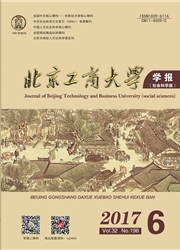

 中文摘要:
中文摘要:
文章采用1993-2014年中国批发和零售业的省际面板数据,使用随机前沿生产函数,从全要素生产率的视角对中国商贸流通业增长方式转型问题进行了实证分析。研究发现,中国商贸流通业增长方式自2006年起从技术驱动型转向资本驱动型,转型实现路径与最优路径之间出现明显偏差;全要素生产率增长明显放缓,尤其是技术无效率程度加深是转型问题产生的根源。具体而言,全要素生产率以2004年为时间节点呈现出先上升后下降的变化趋势;就各分解项来说,配置效率变化对全要素生产率增长的影响相对较小,规模效率变化、技术进步指数,尤其是技术效率变化则是导致全要素生产率增长变化的主要原因。此外,人力资本水平变动,市场对外开放程度加深,电子商务竞争激烈,产业自身存在问题一直未得到有效解决都是可能导致技术无效率程度加深的重要因素。最后,文章在供给侧结构性改革背景下,从流通组织、流通制度、流通技术、流通体制机制等多个角度提出了中国商贸流通业增长方式转型的政策建议。
 英文摘要:
英文摘要:
Using the inter-provincial panel data of Chinese wholesale and retail industry from 1993 to 2014 and stochastic frontier production function, this paper conducted an empirical investigation into the growth pattern transformation of China's commercial circulation from the perspective of TFP growth. The study reveals that the growth pattern of China's commercial circulation has been transformed from a technology-driven type to a capital-driven type since 2006, and there is an obvious deviation between actual transformation and the optimal growth path. There is a noticeable slowdown in TFP. Especially the worsening technical in- efficiency is the root cause of the growth path transformation. To be specific, the TFP growth has been increasing before 2003 and then decreasing since 2004. In terms of the constituents, the change of allocation efficiency exerts little influence on TFP, while the change of scale efficiency, the technological progress index, especially the change of technical efficiency are the main factors causing the TFP growth change. In addition, the change of human capital, the further opening of market, the intense competition of e-commerce and the unsolved problems of the industry itself are the main factors which lead to worsening technical inefficiency. At last, this paper put forward policy recommendations from the perspectives of circulation organization, circulation institution, circulation technology, circulation system and mechanism under the background of supply side structural reform.
 同期刊论文项目
同期刊论文项目
 同项目期刊论文
同项目期刊论文
 期刊信息
期刊信息
